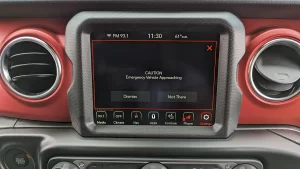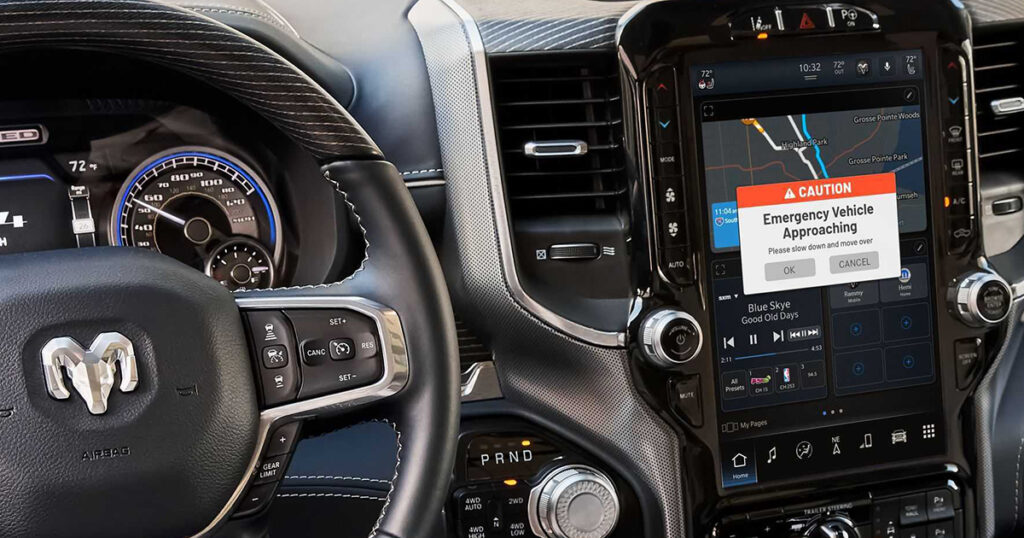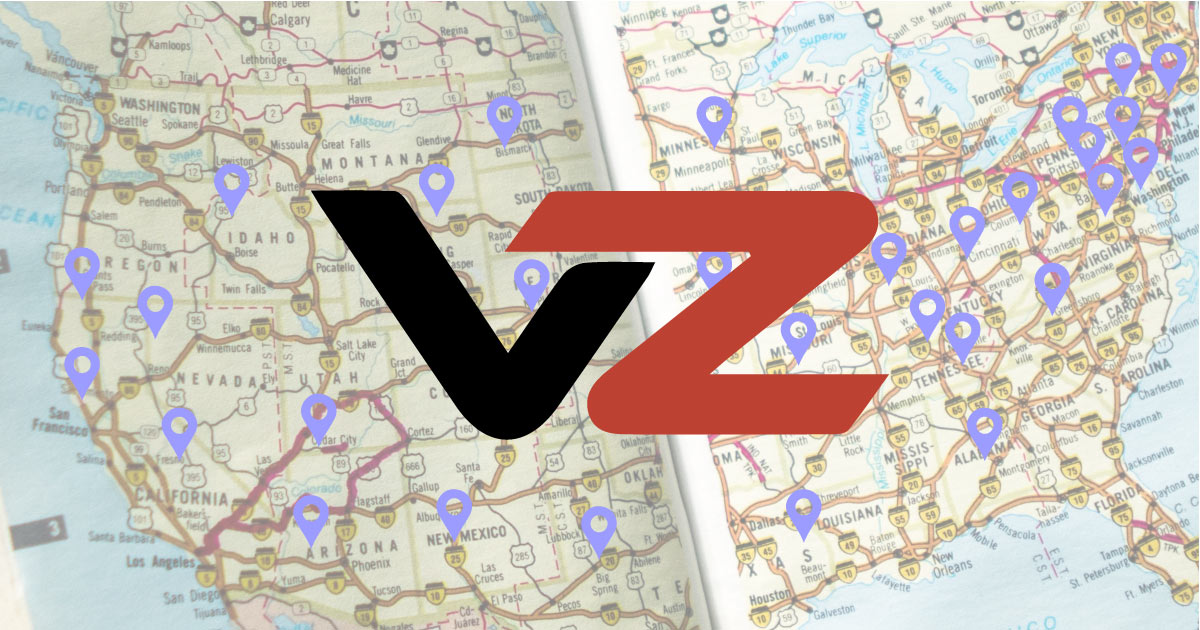When we think of how vehicle safety is managed, the government agencies that typically come to mind are the Department of Transportation and the National Highway Traffic Safety Administration. The Federal Communications Commission traditionally focuses on radio frequency matters. But back in 1999, the FCC reserved a block of the communications frequency spectrum specifically for connected vehicle technologies designed to prevent crashes. We thought that spectrum would have been put to use sooner; it seems to have remained largely unused. But while driving my wife’s Jeep last week, I unexpectedly got a digital alert message on the infotainment screen: Emergency Vehicle Approaching! This technology is a direct result of the aftermarket injecting critical safety information into the screen of an OEM vehicle.
How cool is it to see this technology finally being implemented? Back in April, the FCC gave approval for state agencies, automakers and universities to put this stagnant part of the spectrum to good use. HAAS Alert is the company responsible for Safety Cloud, and Stellantis is the first automaker to integrate the tech. Although the sirens and lights on the emergency vehicle would have clued me in to move over, advance notification is welcome and can help save lives. It helps drivers be more vigilant and can help save precious time if an emergency vehicle is heading to a hospital.
This technology can easily be brought into legacy vehicles through an upgraded infotainment system. Aftermarket mobile enhancement manufacturers are eager to build in this new technology as the price of implementing it drops. This integration is a major milestone on the journey to safer roads. HAAS Alert’s Safety Cloud is getting it done: They have processed more than 1 billion digital alerts to drivers. With this new partnership with an automaker, more drivers will now gain access to real-time alerts in their vehicle dashboard when they’re in close proximity to an active emergency vehicle, tow truck or other roadway hazard without having to download or utilize any additional third-party applications. As awareness grows, we’ll see it implemented into the aftermarket in all kinds of devices.

Who Is Involved in Rolling Out Digital Alerts?
A statement from the FCC says, “The C-V2X Joint Waiver Parties wish to ‘collectively deploy and facilitate deployment of [C-V2X] technology immediately’ to allow nationwide use of the upper frequencies of the 5.9 GHz band for C-V2X-based ITS operations.” Parties include Ford, VW, Jaguar Land Rover, Audi, Harman, Panasonic and the states of Utah and Virginia. The technology, if widely implemented, stands to prevent over 600,000 crashes annually, according to government studies.
Laura Chace, president and CEO of the Intelligent Transportation Society, says, “As deaths on our nation’s roadways continue to soar, it is critical that we maximize the use of connected vehicle technology to keep all road users safe. We can establish a framework of spectrum regulatory certainty that enables investment in and deployment of these important safety solutions.” Hilary Cain, a vice president at the Alliance for Automotive Innovation, says, “[The waivers] are a missing piece of the regulatory puzzle needed for automakers to deploy V2X. This is a game-changing wireless safety technology enabling vehicles to see around corners, talk to other vehicles and communicate – in real-time – with pedestrians, bicyclists, traffic lights and infrastructure.”
HAAS Alert’s Safety Cloud product takes it directly to the streets. HAAS Alert says Safety Cloud digital alerts are delivered up to 30 seconds before drivers reach an emergency scene, giving drivers ample time to make a safe decision and comply with state Move Over laws. Advanced warning systems like Safety Cloud digital alerts have been shown to lower the chances of a collision by 90%, and a recent Purdue University study showed that trucks equipped with digital alerts helped to reduce hard-braking events on interstates by 80%.
The Necessity of Protection
The FCC sees the importance of automotive technology and using it for safety. The FCC further noted that in the intervening years, several auto manufacturers and stakeholders in the consumer automobile market “have turned their attention to C-V2X, partly because of its use of cellular-based protocols and ability to enable rapid development and deployment of ITS applications. As a result, the Commission determined that it must modernize its rules to allow for the deployment of C-V2X technology. This positions the United States to be a global leader at the forefront of continued C-V2X technology development.”
Senators Gary Peters of Michigan and Cynthia Lummis of Wyoming urged the FCC to implement this waiver, stating, “The technology is poised to save lives and will pave the way for the future of automobile and transportation infrastructure.” Getting it out on the streets sooner can only help save more lives. We welcome any technology that can alert us to another motorist, pedestrian or obstacle we potentially may crash into – especially technologies that aftermarket mobile enhancement retailers can implement in our older vehicles.


